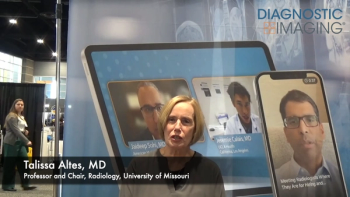
Toshiba prepares to launch new family of ultrasound scanners
With a nod from reviewers at the FDA, Toshiba America Medical Systems has begun preparations to launch its Nemio series of ultrasound imaging systems. The new product line, which cleared the FDA on March 15, is scheduled to debut on May 8 at the Leading
With a nod from reviewers at the FDA, Toshiba America Medical Systems has begun preparations to launch its Nemio series of ultrasound imaging systems. The new product line, which cleared the FDA on March 15, is scheduled to debut on May 8 at the Leading Edge in Diagnostic Ultrasound conference in Atlantic City, NJ.
Nemio will coexist with the PowerVision series that now makes up the company’s U.S. ultrasound offering. Toshiba officials say the two product lines address different market segments.
The Nemio series will include three high-performance digital systems, each selling for less than $100,000. The black-and-white Nemio 10 and the color Nemio 20 are designed for radiology applications. The Nemio 30 is a shared-services product, capable of supporting most applications, including vascular and cardiology. A high-end configuration may be equipped to include 3-D imaging, panoramic view, and stress echo.
“Nemio 30 has all of the advanced applications you would typically find on a premium product,” said Michael Kingcaid, senior director of Toshiba’s ultrasound business unit. “It’s really designed for imaging, cardiology, radiology, and outpatient centers.”
Staff at Toshiba America Medical Systems have been working on the products for more than a year, building on earlier work completed by engineers in Japan. The systems can support fetal, abdominal, intraoperative, pediatric, small organ, neonatal cephalic, and adult cephalic studies. Also possible are cardiac, transrectal, transvaginal, transesophageal, peripheral vascular, musculoskeletal, and laparoscopic exams.
All three versions of Nemio are mobile and work with a range of probes, including flat linear array, convex linear array, and sector array, with a frequency range from 2 MHz to 12 MHz. Options such as monitor size and postprocessing display capabilities help differentiate the three systems, according to Kingcaid.
Newsletter
Stay at the forefront of radiology with the Diagnostic Imaging newsletter, delivering the latest news, clinical insights, and imaging advancements for today’s radiologists.




























